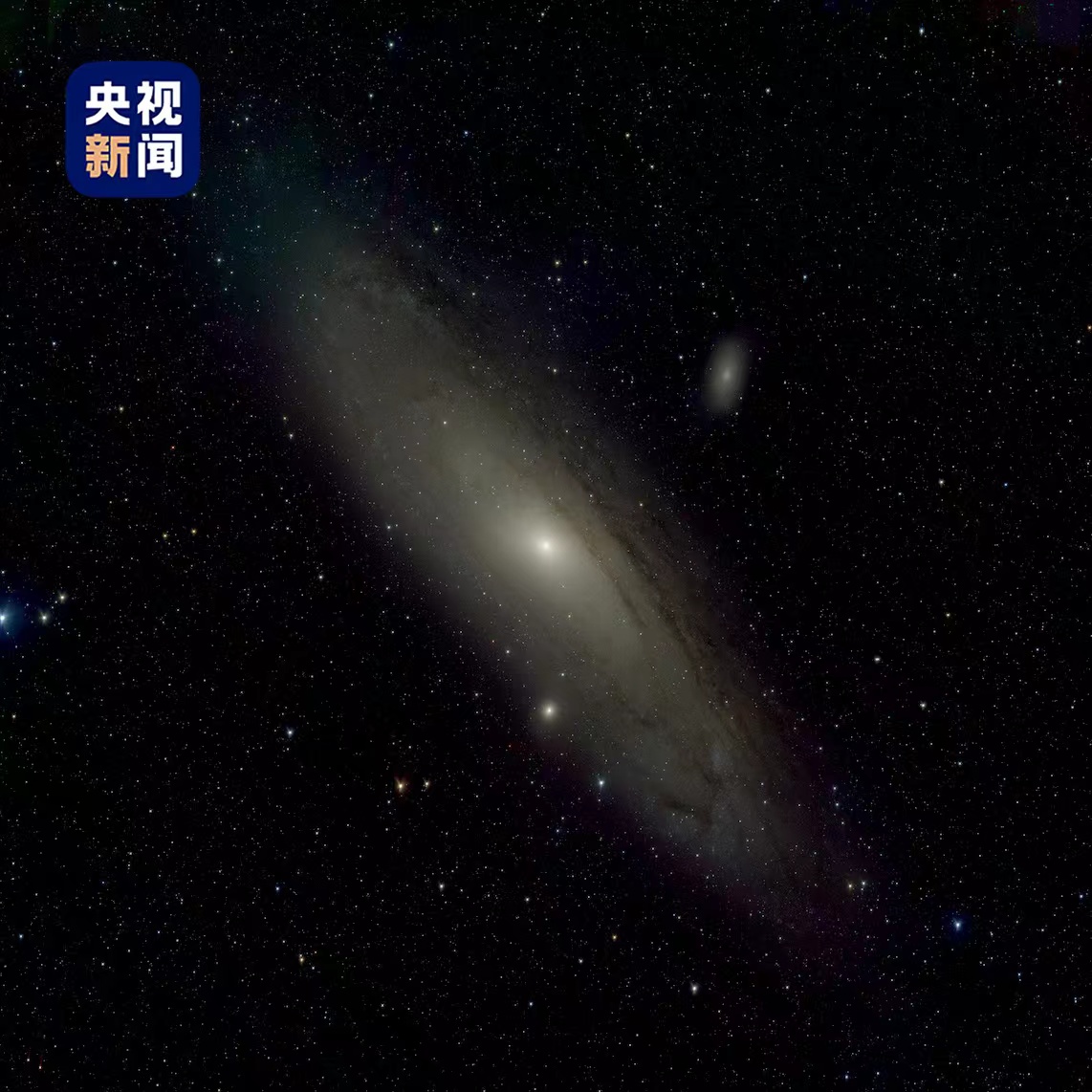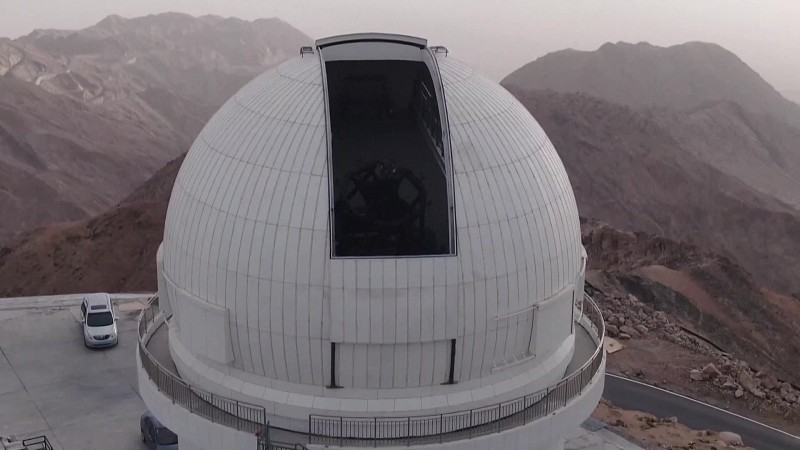
The high-resolution image of the Andromeda Galaxy taken by China's Wide Field Survey Telescope. /CMG
The high-resolution image of the Andromeda Galaxy taken by China's Wide Field Survey Telescope. /CMG
China's wide-field telescope, which is capable of surveying the entire sky from the Northern Hemisphere, went into operation in northwest China's Qinghai Province after a month of trial operation.
The telescope has released the first image it observed of the Andromeda Galaxy, marking the facility reaching the designed standard for astronomical research. The image is also by far the largest high-resolution image of the Andromeda Galaxy with the widest view in the world.
The telescope took 150 30-second exposure photos to generate the image of the galaxy which is 2.5 million light-years away.
Measuring 2.5 meters in diameter, the Wide Field Survey Telescope (WFST) is now the largest time-domain survey facility in the Northern Hemisphere.

An aerial view of the Wide Field Survey Telescope in Lenghu Town, Mangya City, northwest China's Qinghai Province. /CFP
An aerial view of the Wide Field Survey Telescope in Lenghu Town, Mangya City, northwest China's Qinghai Province. /CFP
It was jointly developed by the University of Science and Technology of China and the Purple Mountain Observatory under the Chinese Academy of Sciences.
The telescope can help scientists monitor dynamic astronomical events and carry out the astronomical observation research.
"After the WFST becomes fully operational, we can use it to detect some very faint and distant celestial signals, including those from distant galaxies and galaxy clusters outside the Milky Way," said Lou Zheng, chief engineer of the observatory's Qinghai observation station.
It will become the most powerful sky survey telescope in the Northern Hemisphere, said Kong Xu, the project's chief designer at the University of Science and Technology of China. "The use of the WFST will greatly improve China's near-Earth object monitoring and early warning capabilities."

A close-up image of the Wide Field Survey Telescope. /CFP
A close-up image of the Wide Field Survey Telescope. /CFP
In 2022, the telescope was nicknamed after the ancient Chinese philosopher Mozi, or Micius, who is said to be the first in history to conduct optical experiments.
Construction of the telescope project started in July 2019 in Lenghu Town, which has an average altitude of approximately 4,000 meters. The town is also known as China's "Mars Camp" due to its eerily eroded desert landscape that resembles the surface of the red planet.
The Lenghu area has the advantages of the plateau region's clear night skies, stable atmospheric conditions, dry climate, and less artificial light pollution, meaning it has the potential to become one of the best sites for stargazing in the Eurasian continent. Since 2020, Lenghu has attracted 11 scientific research institutions and 12 telescope projects, with a total investment of 2.7 billion yuan (about $370 million).